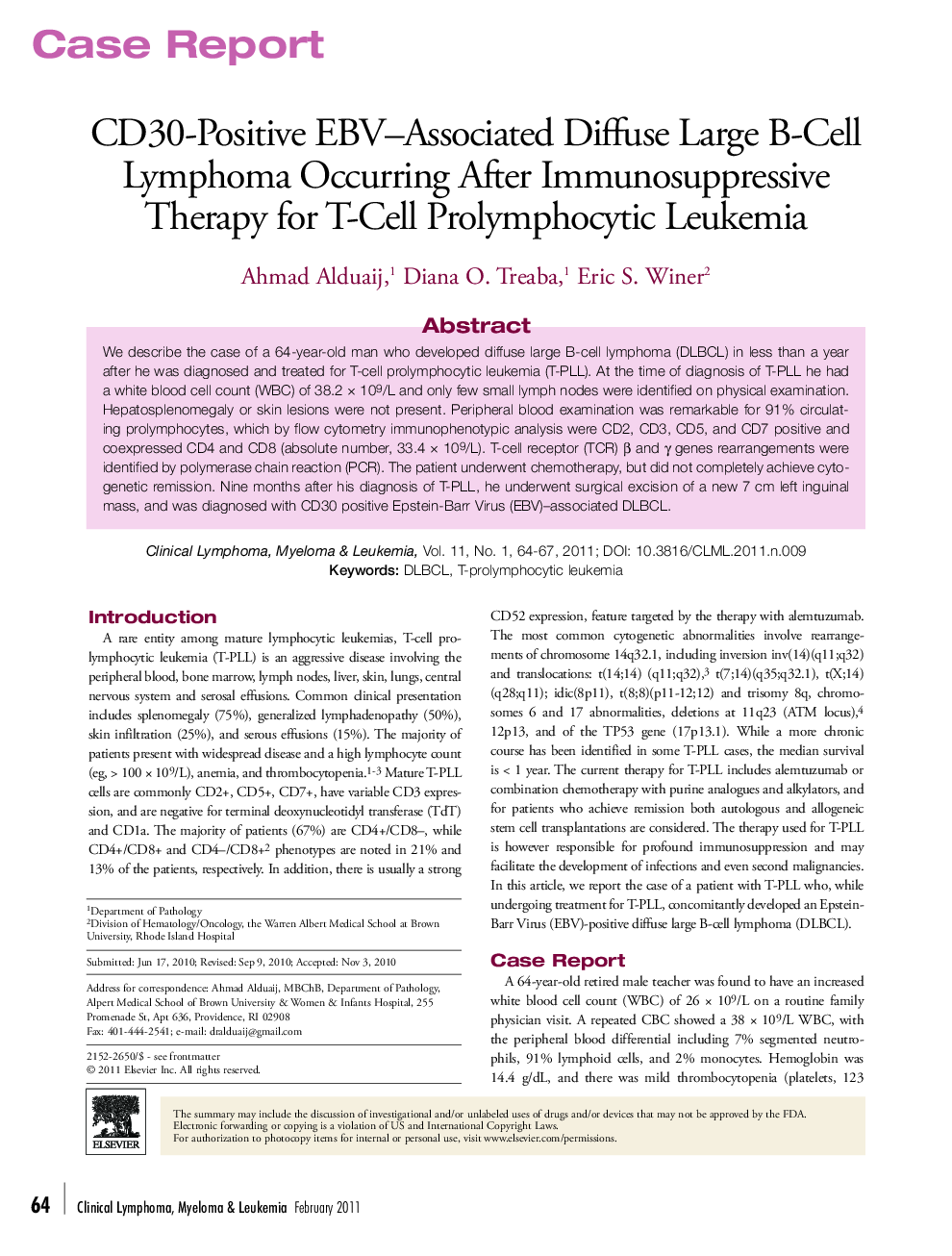| Article ID | Journal | Published Year | Pages | File Type |
|---|---|---|---|---|
| 2755093 | Clinical Lymphoma Myeloma and Leukemia | 2011 | 4 Pages |
We describe the case of a 64-year-old man who developed diffuse large B-cell lymphoma (DLBCL) in less than a year after he was diagnosed and treated for T-cell prolymphocytic leukemia (T-PLL). At the time of diagnosis of T-PLL he had a white blood cell count (WBC) of 38.2 × 109/L and only few small lymph nodes were identified on physical examination. Hepatosplenomegaly or skin lesions were not present. Peripheral blood examination was remarkable for 91% circulating prolymphocytes, which by flow cytometry immunophenotypic analysis were CD2, CD3, CD5, and CD7 positive and coexpressed CD4 and CD8 (absolute number, 33.4 × 109/L). T-cell receptor (TCR) β and γ genes rearrangements were identified by polymerase chain reaction (PCR). The patient underwent chemotherapy, but did not completely achieve cytogenetic remission. Nine months after his diagnosis of T-PLL, he underwent surgical excision of a new 7 cm left inguinal mass, and was diagnosed with CD30 positive Epstein-Barr Virus (EBV)–associated DLBCL.
